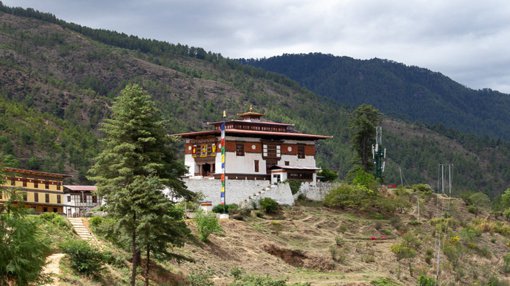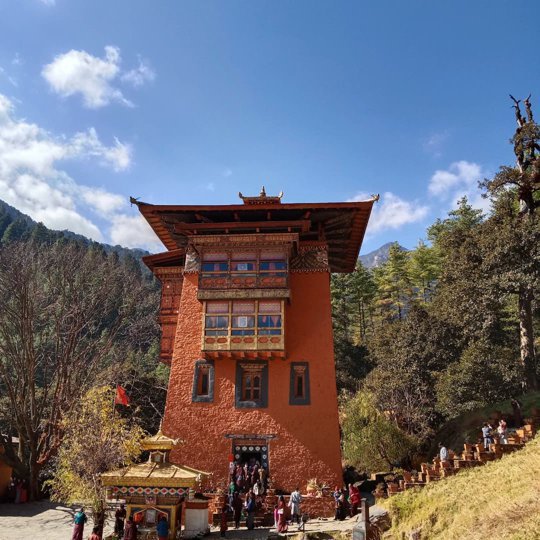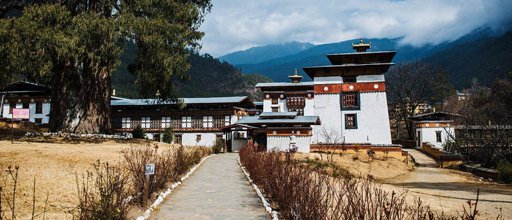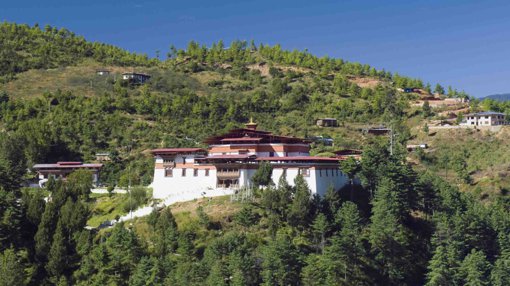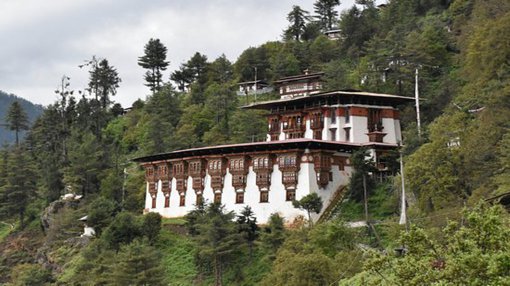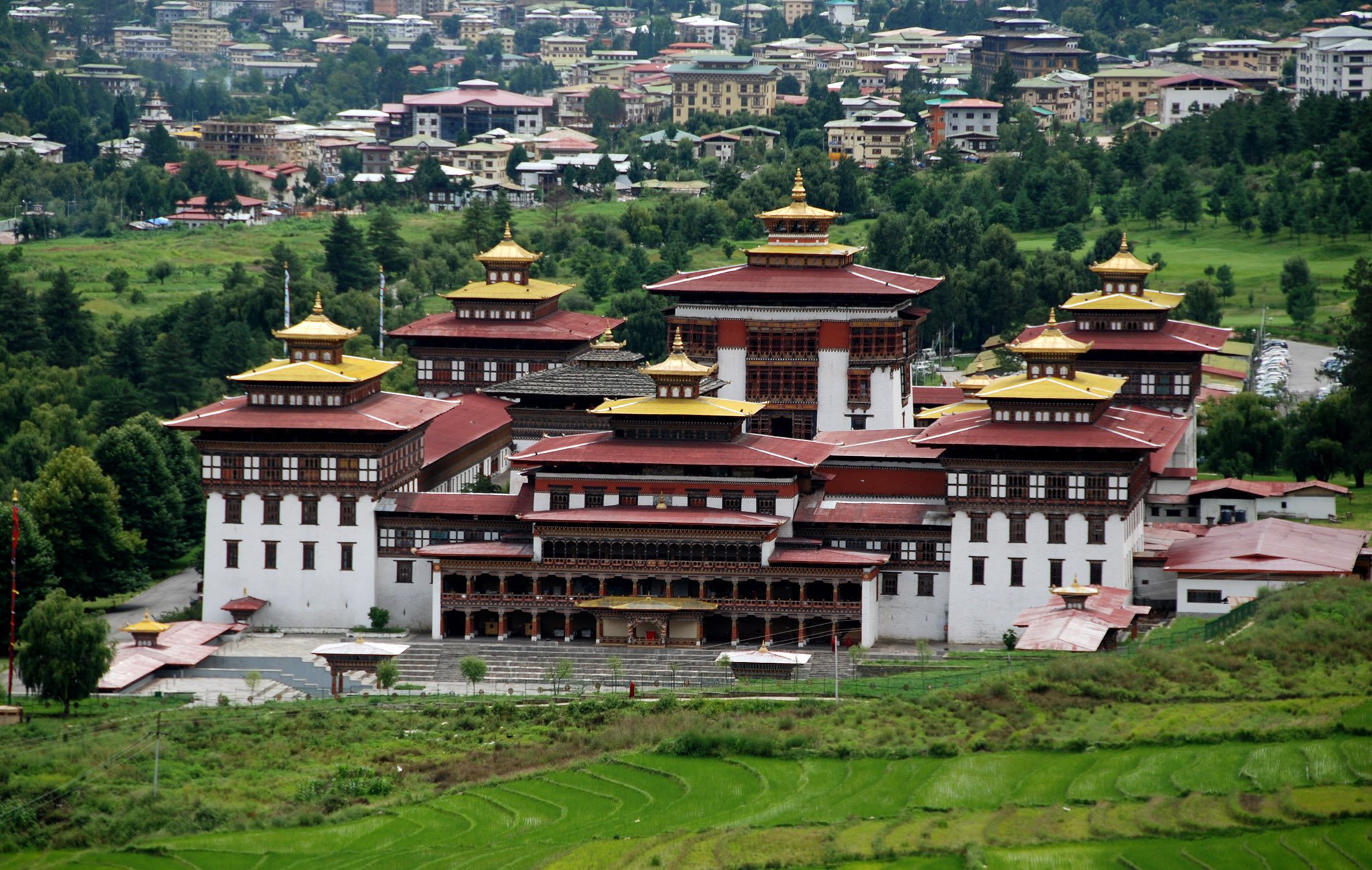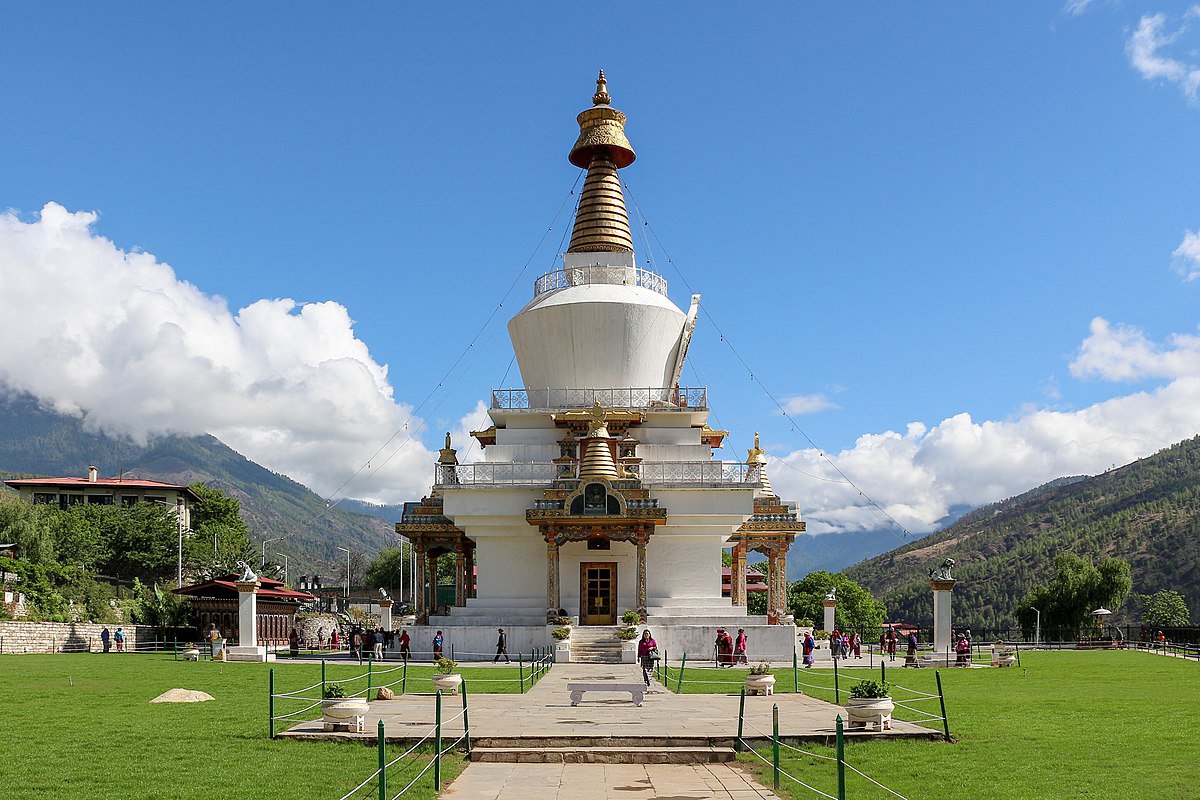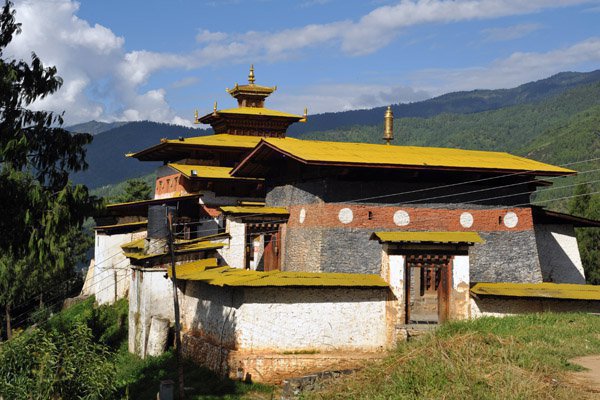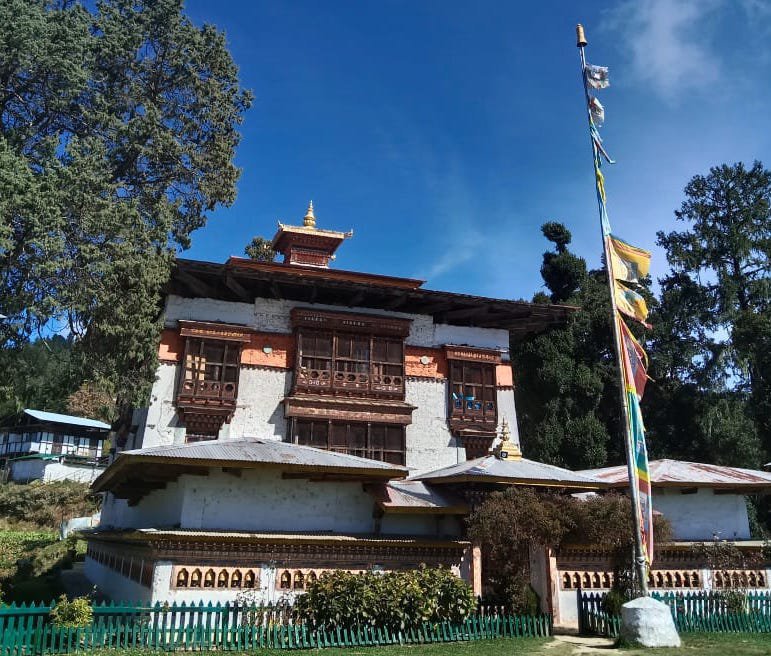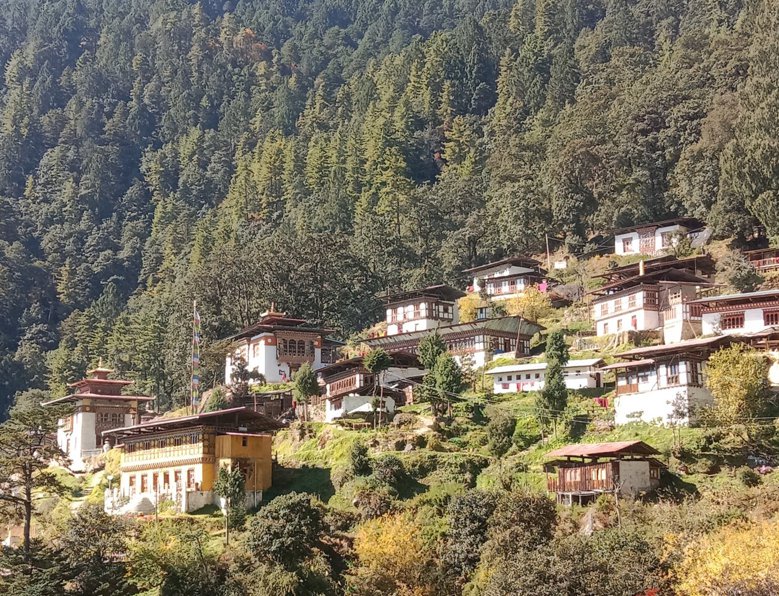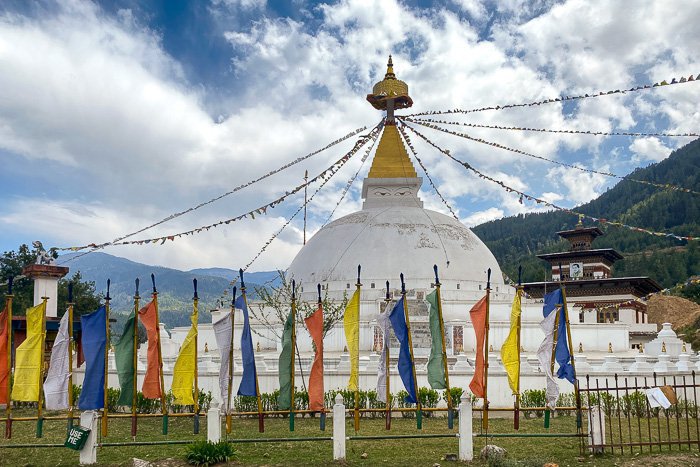Begana Chorten
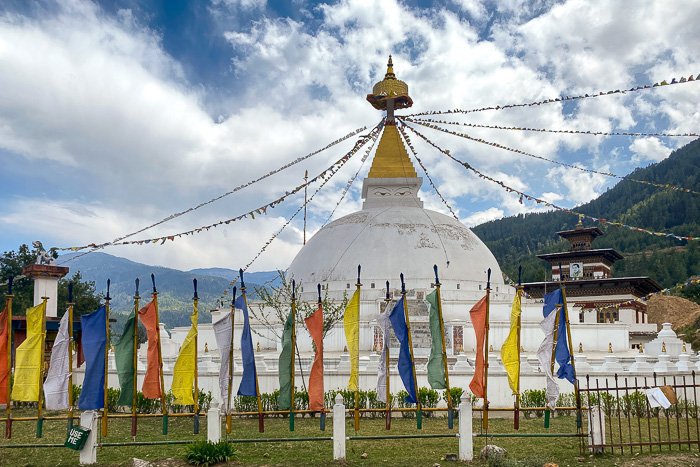
Begana Chorten is a small-scale replica of the Bodnath stupa in Kathmandu, Nepal, which dates from the 14th century. The Begana is much newer, likely dating from the late 20th century. Like the Bodnath, it is shaped from the air like a cosmic mandala with the world-mountain (Sumeru) at its center, topped by a square harmika, a many-tiered golden pyramid, and capped with an umbrella-like finial. The site is also sometimes referred to by its Tibetan name Jarungkhasor, by which the Bodnath is also known.
Various stupas resembling the Bodnath may be found throughout Bhutan, including the Chendebi Chorten in Trongsa and the Chorten Kora, found in Trashiyangtse in east Bhutan. According to An Introduction to the Traditional Architecture of Bhutan, these chorten are built following an ancient Indian style, with the eyes of the "Mystic Buddha" peering from each face. However, an alternative explanation is that these represent the Lokapalas, the guardians of the four directions. The base of the monument is indeed an ancient Indian design known as a vimsatikona mandala, meaning "Twenty Cornered."
According to legend, chorten (or stupas) of this style are often believed to be linked to routes marking the earliest spread of Buddhism, though this may be apocryphal. For example, at Bodnath, the stupa is widely regarded as having been founded by Padmasambhava (Guru Rimpoche) in the 8th century prior to its "rediscovery" in the 13th century. In Bhutan, similar-style stupas such as the Chendebi Chorten in Trongsa and the Chorten Kora in east Bhutan are believed to stand along the trade routes through which Buddhism was first disseminated throughout the land.
Source: www.orientalarchitecture.com
